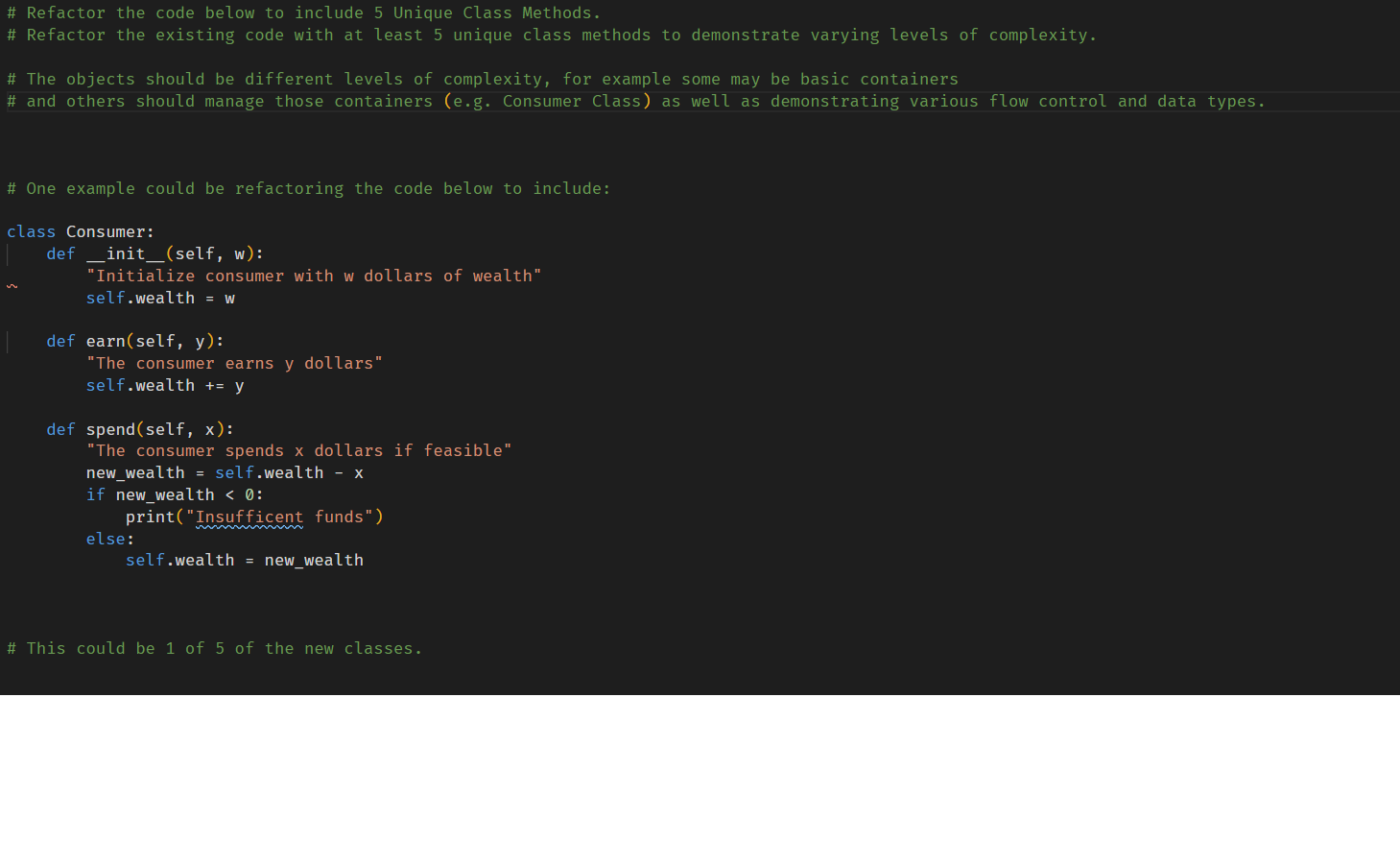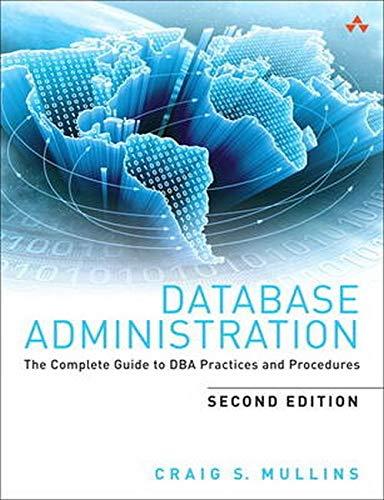Question
Refactor the code below to include 5 unique class methods. The classes can be anything to enhance the code. Developed a retirement calculator using a
Refactor the code below to include 5 unique class methods. The classes can be anything to enhance the code. 
"""Developed a retirement calculator using a Monte Carlo simulation"""
import sys
import random
import matplotlib.pyplot as plt
def read_to_list(file_name):
"""Open financial data in percent, convert to a decimal and return a list"""
with open(file_name) as in_file:
lines = [float(line.strip()) for line in in_file]
decimal = [round(line / 100, 5) for line in lines]
return decimal
def default_input(prompt, default=None):
"""Allow default values in input"""
# prompt = '{} [{}]: '.format(prompt, default)
prompt = f'{prompt} [{default}]: '
response = input(prompt)
if not response and default:
return default
else:
return response
# Financial data to be loaded from files with original data in percent form
print(" Note: Input data should be in percent, not decimal! ")
try:
bonds = read_to_list('10-yr_TBond_returns_1926-2013_pct.txt')
stocks = read_to_list('SP500_returns_1926-2013_pct.txt')
blend_40_50_10 = read_to_list('S-B-C_blend_1926-2013_pct.txt')
blend_50_50 = read_to_list('S-B_blend_1926-2013_pct.txt')
infl_rate = read_to_list('annual_infl_rate_1926-2013_pct.txt')
except IOError as e:
print(f"{e}. Terminating program.", file=sys.stderr)
sys.exit(1)
# Get user input; use dictionary for investment-type arguments
investment_type_args = {
'bonds': bonds,
'stocks': stocks,
'sb_blend': blend_50_50,
'sbc_blend': blend_40_50_10
}
# Print input legend for user
print(" stocks = SP500")
print(" bonds = 10-yr Treasury Bond")
print(" sb_blend = 50% SP500/50% TBond")
print("sbc_blend = 40% SP500/50% TBond/10% Cash ")
print("Press ENTER to take default value shown in [brackets]. ")
# get user input
invest_type = default_input("Enter investment type: (stocks, bonds, sb_blend,"\
" sbc_blend): ", 'bonds').lower()
while invest_type not in investment_type_args:
invest_type = input("Invalid investment. Enter investment type " \
"as listed in prompt: ")
start_value = default_input("Input starting value of investments: ", \
'2000000')
while not start_value.isdigit():
start_value = input("Invalid input! Input integer only: ")
withdrawal = default_input("Input annual pre-tax withdrawal" \
" (today's $): ", '80000')
while not withdrawal.isdigit():
withdrawal = input("Invalid input! Input integer only: ")
min_years = default_input("Input minimum years in retirement: ", '18')
while not min_years.isdigit():
min_years = input("Invalid input! Input integer only: ")
most_likely_years = default_input("Input most-likely years in retirement: ",
'25')
while not most_likely_years.isdigit():
most_likely_years = input("Invalid input! Input integer only: ")
max_years = default_input("Input maximum years in retirement: ", '40')
while not max_years.isdigit():
max_years = input("Invalid input! Input integer only: ")
num_cases = default_input("Input number of cases to run: ", '50000')
while not num_cases.isdigit():
num_cases = input("Invalid input! Input integer only: ")
# check for other erroneous input
if not int(min_years)
or int(max_years) > 99:
print(" Problem with input years.", file=sys.stderr)
print("Requires Min
sys.exit(1)
def montecarlo(returns):
"""Run MCS and return investment value at end-of-plan and bankrupt count."""
case_count = 0
bankrupt_count = 0
outcome = []
while case_count
investments = int(start_value)
start_year = random.randrange(0, len(returns))
duration = int(
random.triangular(int(min_years), int(max_years),
int(most_likely_years)))
end_year = start_year + duration
lifespan = [i for i in range(start_year, end_year)]
bankrupt = 'no'
# build temporary lists for each case
lifespan_returns = []
lifespan_infl = []
for i in lifespan:
lifespan_returns.append(returns[i % len(returns)])
lifespan_infl.append(infl_rate[i % len(infl_rate)])
# loop through each year of retirement for each case run
for index, i in enumerate(lifespan_returns):
infl = lifespan_infl[index]
# don't adjust for inflation the first year
if index == 0:
withdraw_infl_adj = int(withdrawal)
else:
withdraw_infl_adj = int(withdraw_infl_adj * (1 + infl))
investments -= withdraw_infl_adj
investments = int(investments * (1 + i))
if investments
bankrupt = 'yes'
break
if bankrupt == 'yes':
outcome.append(0)
bankrupt_count += 1
else:
outcome.append(investments)
case_count += 1
return outcome, bankrupt_count
def bankrupt_prob(outcome, bankrupt_count):
"""Calculate and return chance of running out of money & other stats."""
total = len(outcome)
odds = round(100 * bankrupt_count / total, 1)
print(f" Investment type: {invest_type}")
print("Starting value: ${:,}".format(int(start_value)))
print("Annual withdrawal: ${:,}".format(int(withdrawal)))
print("Years in retirement (min-ml-max): {}-{}-{}".format(
min_years, most_likely_years, max_years))
print("Number of runs: {:,} ".format(len(outcome)))
print("Odds of running out of money: {}% ".format(odds))
print("Average outcome: ${:,}".format(int(sum(outcome) / total)))
print("Minimum outcome: ${:,}".format(min(i for i in outcome)))
print("Maximum outcome: ${:,}".format(max(i for i in outcome)))
return odds
def main():
"""Call MCS & bankrupt functions and draw bar chart of results."""
outcome, bankrupt_count = montecarlo(investment_type_args[invest_type])
odds = bankrupt_prob(outcome, bankrupt_count)
# generate matplotlib bar chart
plotdata = outcome[:3000] # only plot first 3000 runs
plt.figure('Outcome by Case (showing first {} runs)'.format(len(plotdata)),
figsize=(16, 5)) # size is width, height in inches
index = [i + 1 for i in range(len(plotdata))]
plt.bar(index, plotdata, color='black')
plt.xlabel('Simulated Lives', fontsize=18)
plt.ylabel('$ Remaining', fontsize=18)
plt.ticklabel_format(style='plain', axis='y')
ax = plt.gca()
ax.get_yaxis().set_major_formatter(
plt.FuncFormatter(lambda x, loc: "{:,}".format(int(x))))
plt.title('Probability of running out of money = {}%'.format(odds),
fontsize=20,
color='red')
plt.show()
# run program
if __name__ == '__main__':
main()
# Refactor the code below to include 5 Unique Class Methods. # Refactor the existing code with at least 5 unique class methods to demonstrate varying levels of complexity. # The objects should be different levels of complexity, for example some may be basic containers # and others should manage those containers (e.g. Consumer Class) as well as demonstrating various flow control and data types. # One example could be refactoring the code below to include: class Consumer: def __init__(self, w): "Initialize consumer with w dollars of wealth" self.wealth = w def earn(self, y): "The consumer earns y dollars" self.wealth += y def spend(self, x): "The consumer spends x dollars if feasible" new_wealth = self.wealth - X if new_wealthStep by Step Solution
There are 3 Steps involved in it
Step: 1

Get Instant Access to Expert-Tailored Solutions
See step-by-step solutions with expert insights and AI powered tools for academic success
Step: 2

Step: 3

Ace Your Homework with AI
Get the answers you need in no time with our AI-driven, step-by-step assistance
Get Started


